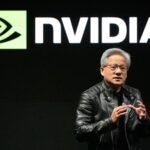What Is Elon Musk’s Unsold NFT?
In December 2018, Elon Musk announced that he would offer 5 million of his NFT tokens at $1 each, with the objective of encouraging companies to build on top of the Ethereum network. Although it was originally planned that all of these tokens would be sold within 30 days, they remained unsold as of May 2019. Here’s what you need to know about Elon Musk’s unsold NFT and what they could mean for his vision of the future of cryptocurrencies and blockchain technologies.
Elon Musk’s Non-Fungible Token (NFT)
Some claim that Elon Musk’s new token is an innovative non-fungible digital asset, but is it really? Blockchain-based non-fungible tokens (NFTs) are growing in popularity. But when it comes to understanding what they are and how they work, people can become confused. Using an Elon Musk branded CryptoKitty as an example, I’ll walk you through what NFTs are and why you might use them in your next application.
How Does It Work?
A simple enough question. But it may come with a surprisingly complex answer. Elon Musk’s Tesla secondary market has only been around for a short while, so there isn’t much information out there about how exactly it works. Here are three reasons why you shouldn’t try to sell your NFT: 1) You can’t resell them until Elon takes them back. 2) No one knows what they’re worth because no one is buying them…yet. 3) You’re legally prohibited from selling your shares (if that’s what they are). Despite having trouble selling these secondary-market vehicles, reports say that Elon still doesn’t want to reduce their price, at least not yet.
Why Use it?
After its latest quarterly report, Tesla shareholders are now asking whether CEO Elon Musk is going to lose even more money. While his convertible bonds are converting at a rate that analysts say could actually lead to him making money on Tesla Inc., there’s another type of bond he has been selling to finance his company’s operations that’s keeping investors uneasy. This particular security is known as an investment-grade non-callable bond, or NNCB.
The Future of ERC721
Some describe non-fungible tokens as crypto-collectibles, and there has been a lot of hype around them. (Read more in our previous post, here.) In simple terms, ERC721 is a token standard that allows unique digital assets to be created on ethereum. NFTs are interoperable with other smart contracts and can be easily transferred without a middleman. They’re owned by whomever holds their corresponding private key or by multiple people who share control over it using multi-signature software wallets. But unlike traditional cryptocurrencies such as bitcoin, they don’t represent ownership of anything physical; rather, they serve as a medium for storing and exchanging value online between users.
How Will They Become Valuable
Non-fungible tokens are unique and each one is tied to a specific virtual asset. The owner of a non-fungible token, or NFT, owns that particular instance of an item, such as a game character or real estate deed. The difference between fungible and non-fungible is more than just semantics; it’s central to how these tokens work and why they have value. On Bitcoin blockchain networks—the most popular kind—individual transactions can be linked together in blocks on what’s called a public ledger. Transactions are not recorded individually; instead, they all appear together as one continuous list.





